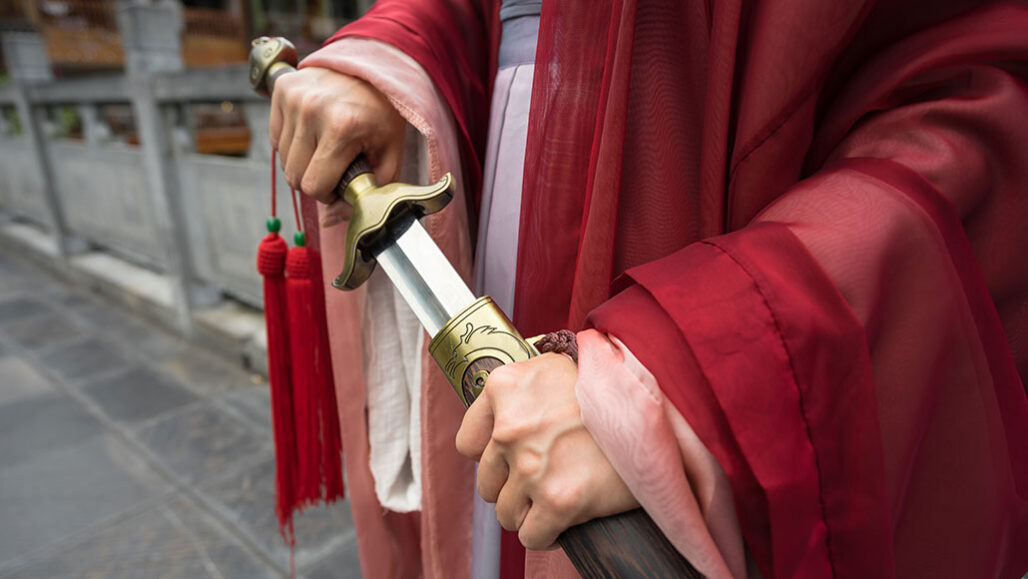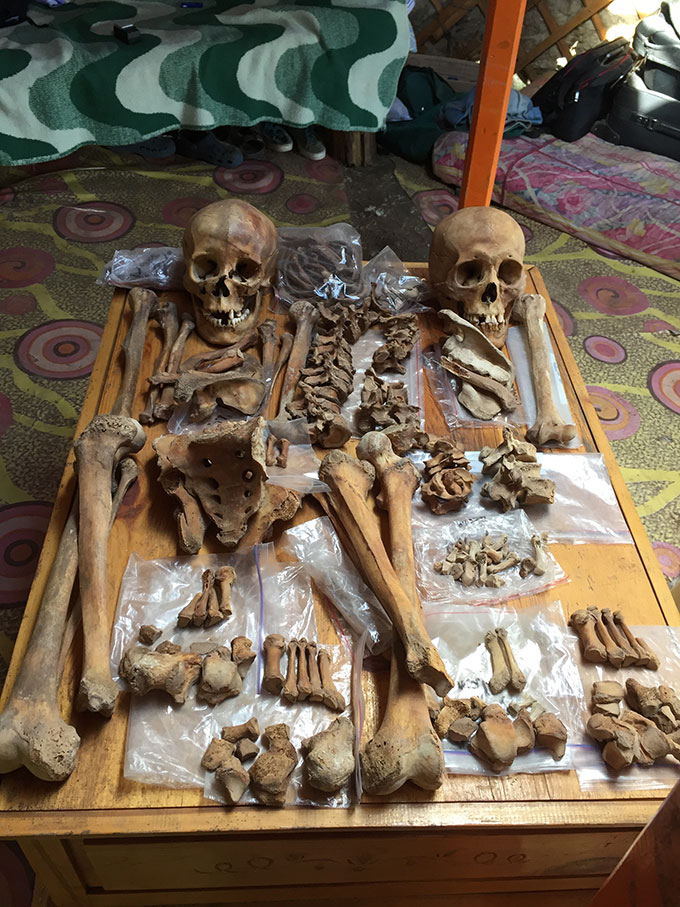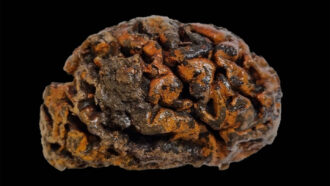Women like Mulan didn’t need to go to war in disguise
Archaeologists have turned up evidence of ancient female fighters in China and elsewhere

In the story of Mulan, a young woman joins the Chinese army.
Thank you for your assistant/iStock/Getty Images Plus
In the new live-action movie Mulan, the main character is a warrior through and through. Mulan runs away from home to take her father’s place in the army and fight a powerful witch. When Mulan finally meets her, the witch says, “When they find out who you are, they will show you no mercy.” She meant that men would not accept a woman who fought.
The movie is based on a story from a Chinese ballad. In that story, Hua Mulan (Hua is her family name) trained since childhood to fight and hunt. In that version, she also didn’t have to sneak away to join the army. And though she fights as a man for 12 years, her fellow soldiers are only surprised, not upset, when she decides to leave the army and reveal herself as a woman.
“Historians debate the dates and the details of Mulan,” says Adrienne Mayor. She’s a historian of ancient science at Stanford University in California. She also wrote a book called The Amazons: Lives and Legends of Warrior Women across the Ancient World. No one is quite sure if Mulan was real, Mayor says. She might even have been based on more than one person.
But scientists do know that there was more than one female warrior riding through the grasslands of Inner Mongolia (now a part of China) between 100 and 500 A.D. In fact, evidence from ancient skeletons shows that warriors around the world weren’t always men.
Truth in skeletons
“There have always been women warriors in northern China, Mongolia, Kazakhstan and even Korea,” says Christine Lee. She’s a bioarchaeologist — someone who studies human history through research on human remains. She works at California State University in Los Angeles. Lee herself has found skeletons of possible warrior women in ancient Mongolia, a nation just north of China.
This is where someone like Mulan would have grown up, Lee says. She would have been part of a group of nomads called the Xianbei (She-EN-bay). When Mulan would have lived, the Xianbei were fighting the eastern Turks in what is now Mongolia.
Skeletons Lee has uncovered from ancient Mongolia show that women were as active as men. Human bones keep records of our lives. “You don’t need to look through the crap in your house for someone to know what your life is like,” says Lee. “From your body [it’s possible to] tell … health status [and] a violent life or an active life.”

Educators and Parents, Sign Up for The Cheat Sheet
Weekly updates to help you use Science News Explores in the learning environment
Thank you for signing up!
There was a problem signing you up.
As people use their muscles, tiny tears occur where the muscles attach to bones. “Every time you rip those muscles, tiny bone molecules build up. They build up tiny ridges,” Lee explains. Scientists can conclude from those tiny ridges how active someone had been.
The skeletons Lee has studied show evidence of very active lives, including shooting arrows. They also “have muscle markings that show [these women] were horseback riding,” she says. “There was proof that there were women doing exactly what men were doing, which is in itself is a huge thing to find.”
Broken bones
But someone can be athletic without being a fighter. How do scientists know that women were warriors? For that, Kristen Broehl looks at their injuries. She’s an anthropologist — someone who studies different societies and cultures. She works at the University of Nevada in Reno.
Broehl studies skeletons from Indigenous people in California. They lived in North America before Europeans arrived. She was interested in whether women fought there. To find out, she and her colleagues looked at data from 289 male and 128 female skeletons. All dated from between 5,000 and 100 years ago.
The scientists focused on skeletons showing signs of trauma — especially injury with sharp objects. Such people could have been harmed by a knife, spear or arrow, Broehl explains. If someone survived this injury, there also would be signs of healing. If the injury led to death, the bones would not have healed. Some might even have arrows still embedded in them.

Both male and female skeletons had cut marks, Broehl found. Almost nine in every 10 male skeletons showed signs of cut marks that occurred around the time of death — as did eight in 10 of the female skeletons.
“The trauma in skeletal males is often considered evidence of participation in warfare or violence,” Broehl says. But such trauma in females has usually been interpreted as “evidence that they were victims.” But that assumption is too simplistic, Broehl says. To figure out if someone was a fighter, her team looked at the angle of the injuries.
Injuries to the back of the body might have occurred in fighting. But those types also might occur if someone was attacked while running away. Injuries on the front of the body, however, indicate someone had been facing their attacker. It’s more likely that they were fighting the attacker. And more than half of both male and female skeletons had such frontal injuries.
That could mean that men and women in California were fighting together, Broehl and her colleagues conclude. They presented their findings April 17 at the Annual Meeting of the American Association of Physical Anthropologists.
Injuries on female skeletons from Mongolia and what is now Kazakhstan (just to its west) also show women got into fights, notes Mayor. Female skeletons from those regions sometimes show “nightstick injuries” — an arm broken when the person lifted their arm to protect their head. They also show “boxer” breaks — broken knuckles from fighting hand to hand. They would have had “lots of broken noses” too, Mayor adds. But because a broken nose only breaks cartilage, skeletons can’t tell that tale.
Because life was hard, both men and women had to participate in battle, she says. And that makes sense “if you have that kind of life on the rugged steppes where, it’s a harsh lifestyle,” Mayor says. “Everyone has to defend the tribe, hunt and take care of themselves.” She argues that “it’s a luxury of settled people that they can oppress women.”
Some graves that had been thought to contain male warriors actually contain female ones, Lee says. In the past, she says, archaeologists “weren’t really looking” for women to be warriors. But that’s changing. “Now that we’ve gotten a lot of attention for it, they’re way they’re more interested in it — and actually looking for the evidence.”
Updated September 8, 2020 at 12:36 PM to note that a broken nose wouldn’t show up on a skeleton, as broken noses break cartilage, which is not preserved.







